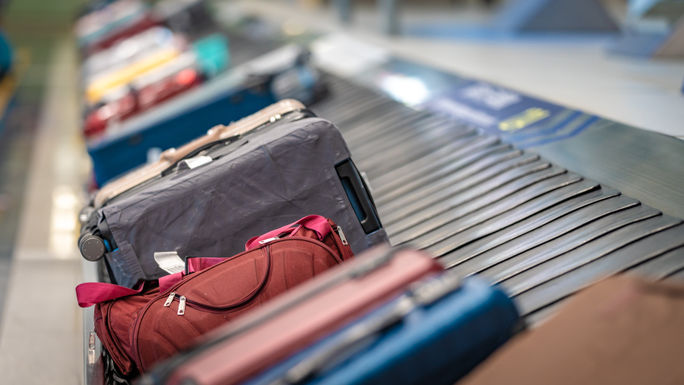Airport infrastructure and baggage screening must change to improve inbound travel experience, says US Travel Association


Inbound travel to this country is plagued by a variety of challenges that can make the experience much more taxing than it should be.
At the annual IPW travel industry convention, which ended earlier this week, the US Travel Association held a press conference in which it attempted to shed light on these challenges.
The revelation that received perhaps the most significant immediate attention among the assembled members of the press was that visa wait times continue to be an excessive obstacle for international visitors.
US Travel Association President and CEO Geoff Freeman said his recent visa status check revealed that Colombians wanting to come to the US currently face wait times in excess of 600 days to get a visa appointment at the US Consulate . Meanwhile, individuals arriving from Mexico face a staggering wait time of 800 days.
But visa problems were just one of the challenges Freeman sought to highlight at an IPW press conference.
Travel to the United States is also affected by “customs inefficiencies” and the “challenges travelers face when trying to make a connection and having to double-check their bags” at US airports after disembarking an arriving international flight and seeking to catch a connecting domestic flight. flight in this country, Freeman said.
“On the customs side, many travelers wait more than two hours to enter the United States, after spending 10, 12 or 14 hours on a flight just to land here,” Freeman said.
“When it comes to rescreening bags…it’s a huge inconvenience for travelers to go through customs, collect their bags, and then have to rescreen them at the TSA checkpoint to connect,” Freeman added.

Checked baggage at baggage claim. (Photo credit: Aris Suwanmalee/Adobe Stock)
Inefficiencies and solutions
To help address the challenges plaguing this country’s inbound tourism infrastructure, the US Travel Association recently created what it dubbed the “Commission for Seamless and Safe Travel.” The commission’s mandate is to present ideas that the US government can adopt to help make this country more competitive as a destination.
To that end, commission members are currently traveling across the United States reviewing operations at various airports to help identify opportunities for improvement. They are also meeting with officials at various levels of the industry to discuss possible innovations.
Over the past month, commission members visited Hartsfield-Jackson International Airport in Atlanta to review new technologies that are designed to speed travelers through TSA checkpoints in six seconds or less. Commission members also recently visited Los Angeles International Airport (LAX) to meet with Customs and Border Protection officials and review the agency’s latest technologies and efforts to move travelers through automated screening more quickly.
During a one-on-one interview with TravelPulse at IPW, Freeman elaborated on some of the ways he believes the country can begin improving its inbound tourism infrastructure.
In particular, Freeman said that significantly expanding what is known as the “pre-clearance” program could help eliminate the need for international travelers to re-screen their luggage upon arrival in the U.S. when looking to catch a connecting domestic flight.
The United States pre-clearance program allows travelers and their luggage to undergo security screening to enter the United States in their country of departure.
“With pre-clearance you go through customs on the other side,” explained Freeman. “This means that when I arrive in the United States, I will be [able to
land] in a domestic terminal” and thus bypass the new screening process.
Unfortunately, pre-screening in the US is not widely available around the world. In other words, most arriving international travelers still have to work through the process of collecting their bags and rechecking them in order to catch a domestic connecting flight in this country.
Freeman said expanding the pre-screening program is a “very important” way to address baggage frustrations that international arrivals face.
The reality, unfortunately, is that there are countries where the US preclearance program simply will not be a viable option or solution to the inefficient arrival process that international travelers face. Security issues impede widespread implementation of the program, Freeman explained.
“To be fully transparent, this is not just about the airport aspect. The Department of Homeland Security will only [offer pre-clearance] if it appears the right security relationship exists with the home country,” Freeman said.
In cases where pre-clearance on foreign soil does not offer a solution, reconfiguring airports in that country is another possibility, Freeman said.
The reconfiguration Freeman is talking about would involve redesigning airports to allow foreign arrivals to seamlessly and safely transfer from their incoming international flight to their domestic connection within the airport – without having to re-check bags or go through new screening. But even that option is fraught with potential challenges, including the major renovations that would be needed at U.S. airports.
“It’s a massive initiative. I’m worried about the scalability of this,” admitted Freeman during his discussion with TravelPulse.
Reconfiguring airports would also take time, Freeman said. And it doesn’t offer a general solution.
There is also the issue of financing an airport reconfiguration solution at airports across the country. The money, Freeman said, would likely come from several sources.
“I think what we will see is a combination of government resources, airline resources and airport resources,” he said. “Everyone recognizes the inefficiency of the current situation. And everyone is trying to solve it, some with greater urgency than others.”
Freeman said he is cautiously optimistic that government leaders are up to the challenge ahead when it comes to taking action and addressing the improvements that the country’s inbound travel infrastructure so desperately requires.
But in his parting remarks, Freeman also suggested that travel consultants can play a role in helping to achieve necessary improvements. Advisors can do so by contacting Congressional representatives and urging them to step up and support the way forward.
“I think we as an industry are not as vocal as we need to be about the role the government has in making sure we can get visitors here,” Freeman said. “Travel agents, in particular, are the industry’s rank and file army. And your support, your involvement, your understanding that they need to be advocates, would be greatly appreciated.”
For the latest travel news, updates and deals, subscribe to the TravelPulse daily newsletter.
Topics in this article to explore




